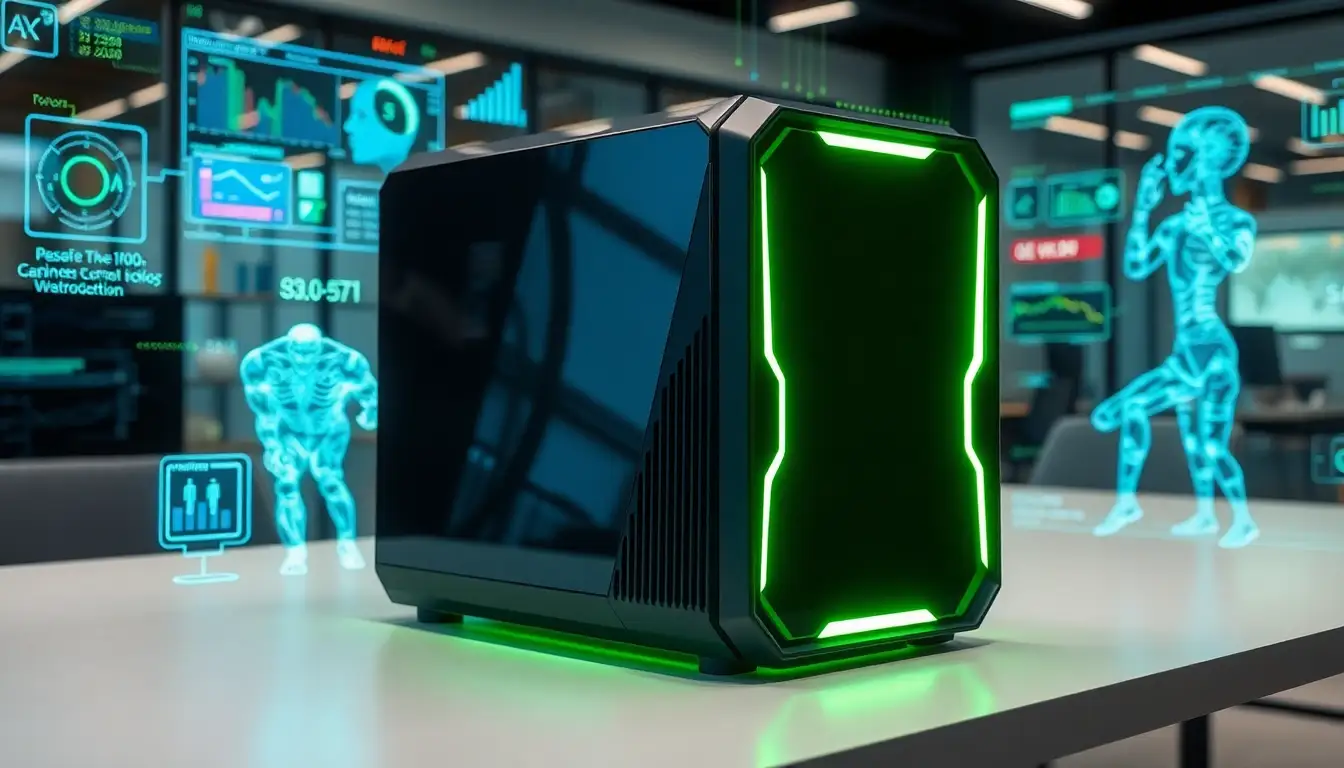
Now loading...
NVIDIA has officially commenced shipping its state-of-the-art technology, the DGX Spark™, touted as the world’s smallest AI supercomputer. This breakthrough comes at a time when the demands of artificial intelligence workloads are rapidly outgrowing the capabilities of traditional computing devices, pushing developers toward cloud solutions or data centers for the necessary computational power.
The DGX Spark, designed in a compact desktop format, boasts a performance capability of up to one petaflop and features 128GB of unified memory. This new system empowers developers to execute inference on AI models containing as many as 200 billion parameters and also enables fine-tuning of models with up to 70 billion parameters, all on their local hardware. This marks a significant shift in AI development, allowing users to create advanced AI agents and run sophisticated software stacks directly from their desktops.
Jensen Huang, NVIDIA’s founder and CEO, highlighted the importance of this launch, recalling how the original DGX-1 was delivered to Elon Musk back in 2016, setting off a wave of innovation that included the creation of ChatGPT. “With DGX Spark, we are returning to that mission—to empower every developer with an AI supercomputer that can spur the next wave of groundbreaking advancements,” he stated.
The DGX Spark incorporates a full arsenal of NVIDIA’s AI technology, including GPUs, CPUs, cutting-edge networking, and software, all engineered to enhance agentic and physical AI advancements. It’s substantial enough to operate in a lab or office environment while providing the processing power required for modern AI applications.
Equipped with a NVIDIA GB10 Grace Blackwell Superchip and bolstered by NVIDIA ConnectX®-7 networking at 200 Gb/s, the DGX Spark delivers an impressive five-fold increase in bandwidth over fifth-generation PCIe. The system’s coherent memory from the CPU and GPU further adds to its versatility and performance.
For ease of use, the NVIDIA AI software stack comes preinstalled, allowing developers to promptly engage with AI projects. With tools such as NVIDIA NIM™ microservices, users can undertake a plethora of local workflow tasks ranging from enhancing models for image generation to developing sophisticated AI chatbots, all optimized for the DGX Spark environment.
To commemorate this milestone, Huang personally delivered one of the initial DGX Spark units to Elon Musk at SpaceX’s Starbase facility in Texas, a nod to the partnership that began with the original DGX-1. In addition to Musk, early adopters such as Anaconda, Cadence, ComfyUI, Docker, Google, Hugging Face, JetBrains, LM Studio, Meta, Microsoft, Ollama, and Roboflow are currently engaged in testing and optimizing their technologies with the new supercomputer.
Global research institutions like NYU’s Global Frontier Lab have previewed the DGX Spark and are excited about the potential for accelerated AI development it brings. “DGX Spark allows us to tap into petascale computing on a personal desktop system, fostering rapid prototyping and experimentation with cutting-edge algorithms, including those sensitive to privacy and security in fields like healthcare,” remarked Kyunghyun Cho, a computer and data science professor at NYU.
Beginning October 15, the DGX Spark is available for order through NVIDIA.com. Partner systems will also be offered by major manufacturers including Acer, ASUS, Dell Technologies, GIGABYTE, HP, Lenovo, MSI, and through Micro Center stores in the United States, as well as NVIDIA’s global channel partners.
